This post was guest authored by Rebekah Nault, Library Specialist in Library Services at the Tampa Library
When hunting for my next recipe to feature on “Bake the Archives,” I had a vision: something light, locally relevant, and, most importantly, delicious. Strawberries were calling my name. After all, what better way to honor the timeless combination of sugary fruit and baked goods than by attempting a classic strawberry shortcake?
THE COOKBOOK
Enter: Mrs. Lincoln’s Boston Cook Book – What To Do and What Not To Do in Cooking. Spoiler alert: I’m confident the “what not to do” part secretly includes this recipe. Mary J Lincoln was forty years old when her Boston Cook Book was first published, and its success made her into the equivalent of a modern day culinary influencer. Lincoln took a scientific approach to cooking, with a focus on making it accessible to anyone – “young ladies, housekeepers, nurses, medical students, pupils from a school for the deaf […], impoverished students and prospective cooking teachers from all parts of the country” (Rachman). Mrs. Lincoln’s Boston Cook Book set the standard for all of the cook books that would come after it.
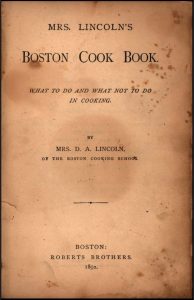
THE RECIPE
Overwhelmingly, Mary’s recipes hit more than they miss, but the lack of sugar in the Shortcakes No. One recipe should have been a massive red flag for me. No sugar, no spice, and nothing remotely nice. I had low expectations from the start, and oh my, I should have trusted my instincts.
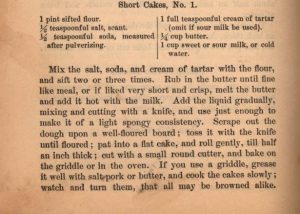
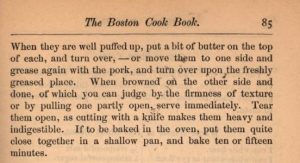
Before I started, I gathered my supplies. And of course, the most important ingredient: Strawberries!
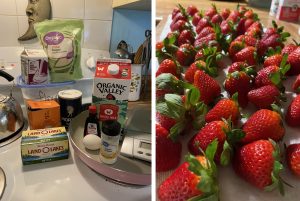
THE BAKE
The result? A punishment in pastry form. These “shortcakes” may have looked deceptively edible, but biting into one felt like an act of self-flagellation. If sadness had a flavor, it would taste like these biscuits.
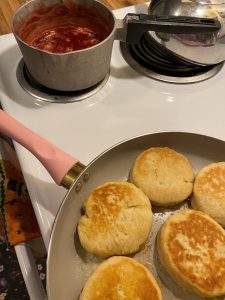
But all hope was not lost. Thankfully, whipping up the strawberry filling was a much sweeter story. Per vague 19th-century directions (“spread with sweetened strawberries and cream to taste”), I washed, sliced, and sugared ⅔ of the strawberries, leaving the rest for a fancy garnish. Artful arrangement? Check. Strawberry salvation was near.
Now, here’s where Mrs. Lincoln redeemed herself: her Whipped Cream Sauce recipe from page 328.
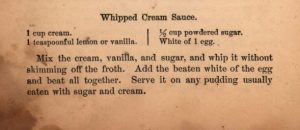
Using cream, vanilla, powdered sugar, and the white of an egg, I whipped up the fluffiest, dreamiest topping ever. It was so good, it almost made me forget the biscuit apocalypse. Faced with the unrelenting awfulness of the “shortcakes,” I turned to a hero: store-bought miniature pound cakes. Topped with sugared strawberries, dollops of whipped cream, and a sprinkle of ingenuity, they were a hit! Mrs. Lincoln may roll in her grave, but I’ll bet she’d secretly approve of my delicious shortcut. In the end, this strawberry shortcake journey was equal parts history lesson and comedy of errors. Sometimes, culinary experiments remind us how far we’ve come, and how much we should appreciate modern recipes.
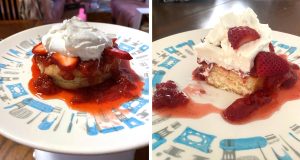
Explore more historic recipes:
- USF Libraries Digital Collections’ Historic Cookbook Collection
- Mary J. Lincoln, “Mrs. Lincoln’s Boston Cook Book: What to Do and What Not to Do in Cooking” (1892)
Want to read more posts like this one?
Explore our Baking the Archives series!
- Baking the Archives: Utilizing historical recipes in honor of National Homemade Bread Day
- Baking the Archives: A Pie for Pi Day
- Baking the Archives: Blueberry cake(ish)
- Baking the Archives: A sweet start for Fall
- Baking the Archives: Dead Bone Cookies
- Baking the Archives: Rum Omelet
References
Lincoln, Mary J., “Mrs. Lincoln’s Boston Cook Book: What to Do and What Not to Do in Cooking” (1892). Historic Cookbook Collection. 4. https://digitalcommons.usf.edu/cookbooks/4
Rachman, A.-M. (n.d.). Lincoln, Mary J. (Mary Johnson), 1844-1921. https://d.lib.msu.edu/msul/60